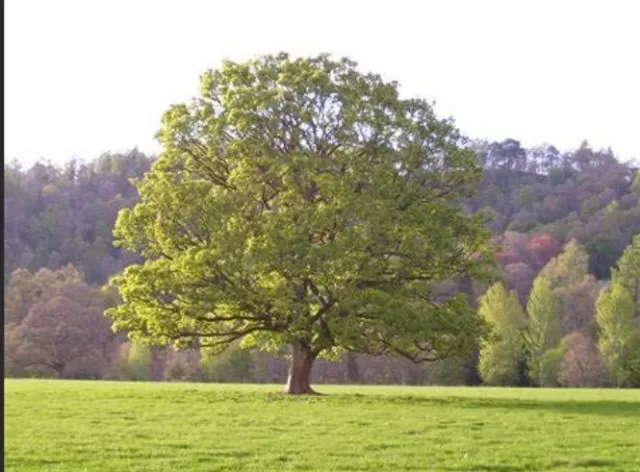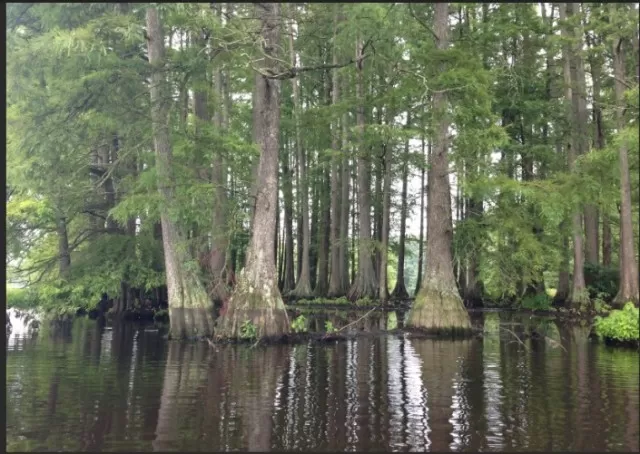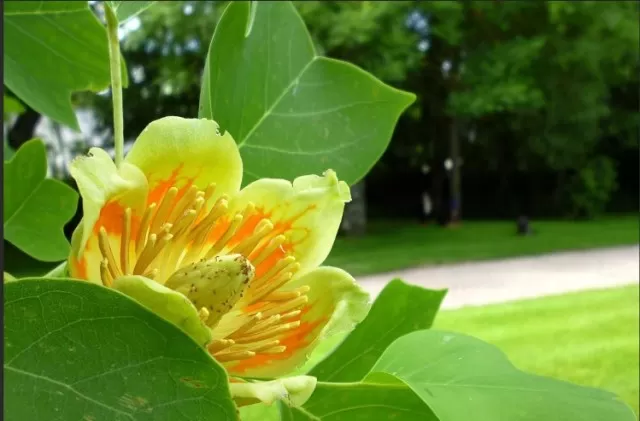10 Rapidly Growing Shade Trees for your yard (Part 1). While shade trees undoubtedly offer numerous advantages, there’s a caveat—you might have to wait years before you fully enjoy their benefits. As Kate Walz, a gardening expert with KW Gardens & Flowers, points out, some trees take decades to mature to a size where they can provide substantial shade, energy savings, and added property value.
But here’s the good news: You can expedite these benefits by choosing to plant fast-growing trees. These speedy growers are the shortcut to enjoying the advantages of shade trees sooner rather than later. They not only offer swift shelter from the sun but also contribute to your garden’s aesthetic appeal and ecological value in a shorter timeframe.
So, when you’re seeking to create a cool, energy-efficient, and valuable outdoor space, consider the remarkable potential of fast-growing trees. With their rapid growth, they’ll swiftly become a cherished asset in your garden, transforming it into a haven of shade and beauty that you can relish in no time at all.
Sycamore: The Tree of Impressive Diversity

The sycamore genus offers an impressive array of tree species, each with its unique charm and adaptability.
Among them, the American sycamore, native to the East Coast, stands as a symbol of the region’s natural beauty. The Arizona sycamore, with its remarkable heat resistance, thrives in arid climates, while the London plane tree, a beloved hybrid, has gained international popularity for its resilience.
One of the defining features that unites these diverse species is their captivating bark, which boasts a mottled or peeling texture that transitions to smooth and white in the upper trunk and canopy.
This distinctive bark not only adds visual intrigue to these trees but also serves as a testament to their enduring beauty.
As Blake Watkins, a master arborist and operations partner at Monster Tree Service, suggests, selecting a sycamore species native to your area can delight local insects and birds, contributing to the ecological health of your region.
Alternatively, the tried-and-true London plane tree is an excellent choice for areas where other trees may struggle, thanks to its adaptability and resilience.
So, whether you’re drawn to the American sycamore’s East Coast charm, the Arizona sycamore’s heat resistance, or the London plane tree’s international appeal, sycamores offer a diverse and impressive range of options for your landscape.
They are a testament to the adaptability and enduring allure of nature’s creations, making them a cherished addition to any outdoor space.
River Birch: A Four-Season Marvel of Nature
Native to North America, the river birch is a tree that graces your landscape with a stunning show during all four seasons.
As described by Walz, its beauty unfolds in a series of natural events, making it a cherished addition to any outdoor space.
In spring, the river birch emerges with bright green leaves that adorn its semi-arching branches, welcoming the season with vitality.
Early summer brings long, dangling seed pods that sway in the breeze, adding a touch of elegance to the tree. As autumn arrives, the leaves transform into a striking shade of yellow, creating a visual spectacle that marks the changing of the seasons.
After the leaves drop, the river birch unveils its unique exfoliating bark on the trunk, which becomes an ornamental point of interest during the winter months.
As the name implies, the river birch naturally thrives along riverbanks and wet areas in the United States.
However, this adaptable tree can tolerate a variety of soil conditions in different landscape settings. Often grown as a multi-stemmed tree, its spreading limbs create an overall pyramidal to oval shape, enhancing the tree’s aesthetic appeal.
So, invite the river birch into your landscape and let it become a four-season marvel of nature.
With its ever-changing beauty and adaptability, it promises to be a source of wonder and delight in your garden, marking the passage of time and the enduring charm of the natural world.
Bald Cypress: Nature’s Unique Deciduous Conifer

The bald cypress is a tree of distinct character and remarkable adaptability.
What sets it apart is its unique behavior among conifers—it’s the only conifer that gracefully sheds its needles in the fall, earning it the name “bald. ” But its exceptional qualities don’t stop there; this tree offers a host of other advantages that make it a cherished addition to a variety of landscapes.
When in full foliage, the bald cypress provides refreshing shade, creating a cool oasis in the heat of summer.
Its high tolerance to air pollution and resilience in less-than-ideal soil conditions have made it a versatile and successful tree, equally at home in the countryside and the urban environment.
As described by George Pisegna, chief horticulturist at the New York Horticultural Society, the bald cypress is a tree of many shades.
Its needles begin their journey as chartreuse green in spring, transitioning to a light green in the summer, and culminating in a magnificent display of orange in the fall. This transition of colors marks the changing of the seasons and adds a touch of natural beauty to any setting.
So, embrace the bald cypress as a symbol of nature’s adaptability and resilience.
This unique deciduous conifer promises to be a valuable addition to your landscape, offering a blend of charm, shade, and seasonal spectacle that’s truly one-of-a-kind.
Palo Verde: The Desert’s Burst of Spring Beauty .
In the world of fast-growing shade trees that can withstand extreme conditions, the palo verde stands as a desert native that truly knows how to put on a show.
Each spring, it graces the desert landscape with a breathtaking burst of tiny yellow blooms, creating a spectacle of color that’s both stunning and practical.
The profusion of these dense yellow flowers provides a welcome respite from the desert sun, casting a cooling shade that offers comfort and relief to all who seek it.
But the palo verde’s charm doesn’t end with its floral display. In the absence of blooms, its lush green leaves step in to provide continued shelter from the relentless sun.
As winter arrives, bringing cooler temperatures and shorter days, the palo verde undergoes a transformation.
It gracefully sheds its leaves, revealing its bare branches, a testament to nature’s adaptability and the cyclical nature of the seasons in the desert.
The palo verde is more than just a tree; it’s a symbol of resilience and beauty in the harshest of environments.
Its ability to thrive in the desert landscape and provide both shade and a burst of springtime color makes it a cherished addition to the arid regions it calls home.
Tulip Tree: Nature’s Tulip-Adorned Giant

The tulip tree, as its name suggests, is a testament to nature’s artistry, gracing the world with blossoms that closely resemble the iconic springtime tulip.
These aromatic buds are a delightful golden-green, adorned with vibrant orange accents that create a stunning spectacle in any landscape.
Belonging to the magnolia family, the tulip tree stands as one of the largest native trees in North America.
Its grandeur and elegance make it a prized addition to the natural tapestry of the continent. But its appeal goes beyond aesthetics; it plays a vital role in supporting local wildlife.
As emphasized by Walz, the tulip tree serves as the host plant for tiger and spicebush swallowtail butterflies, contributing to the ecological diversity and balance of the region.
It’s a living testament to the interconnectedness of nature and the vital role that trees play in supporting the web of life.
So, embrace the tulip tree as a symbol of nature’s artistry and generosity.
Its tulip-adorned branches and its role as a host for butterflies make it a cherished presence in any garden, a reminder that beauty and ecological significance often go hand in hand in the world of trees and plants.
*The information is for reference only.